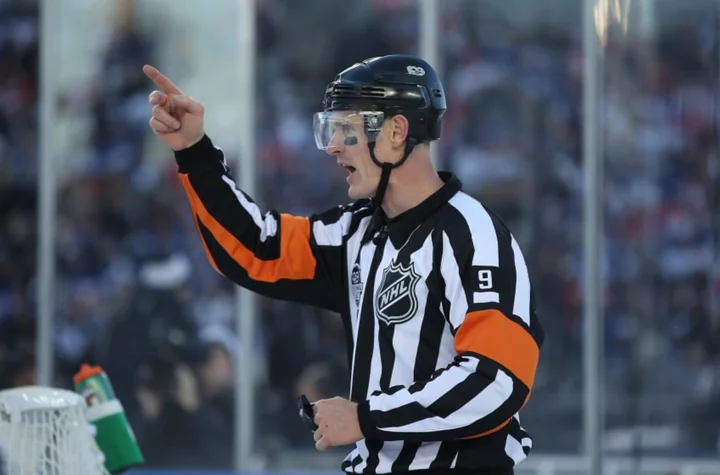The NHL has so many rules that need extra explaining to outsiders. They have offsides, but it's completely different than offsides in soccer. It's also not even close to offsides in football. There are faceoffs, which can happen in nine different spots on the ice based on several different circumstances. Don't even get us started on the confusion around penalties. We still don't know what goaltender interference is.
Still, the most unique rule in hockey is icing. It's a fairly straight-forward rule, but it's unique in its execution and objective.
For those who don't know, icing, as described by the Rule 81 in the NHL Rule Book:
For the purpose of this rule, the center red line will divide the ice into halves. Should any player of a team, equal or superior in numerical strength (power-play) to the opposing team, shoot, bat or
deflect the puck from his own half of the ice beyond the goal line of the opposing team, play shall be stopped... For the purpose of this rule, the point of last contact with the puck by the team in possession shall be used to determine whether icing has occurred or not.
That's a lot of hockey talk to simply say "anytime a puck is shot prior to the center line and goes past the end line, it's an icing." Of course, the defensive team needs to get to the puck first. If the referee believes that the offensive player has a good chance to get to the puck first, an icing won't be called. We'll get to that in a moment.
Once an icing is called, the puck is brought back to the defensive zone for a faceoff, no matter where the puck was shot from. The defensive team is not allowed to make a line change. So, if a tired line accidentally or purposely sends the puck down the ice, they're forced to stay on the ice for the faceoff before making a line change. This part of the rule came right after the 2004-05 NHL Lockout to speed the game up. Taking away the incentive of icing would bring it back to what it is, an infraction.
Icing used to look very different. No-touch icing, or hybrid icing, was implemented for the 2013-14 season. Icing and the attempt to avoid icing was a major factor in injuries to players, including the career-ending injury to Joni Pitkänen. It took a few seasons for referees to get the new icing rule perfected, but it's usually right more often than not. There are some judgment calls, and that will come with controversy, but for the most part, this should be a welcome change.
Today, icing is still a major factor in games from the opening faceoff to the final whistle. Teams have lost momentum because of icing calls, blew games because of the timing of an icing call, and scored goals by avoiding icing calls. It's an important part of the game to keep it moving and driving offense, which at the end of the day, will bring more eyes to the game.

